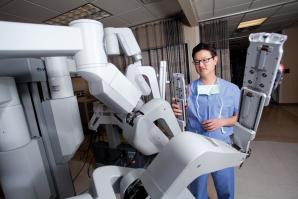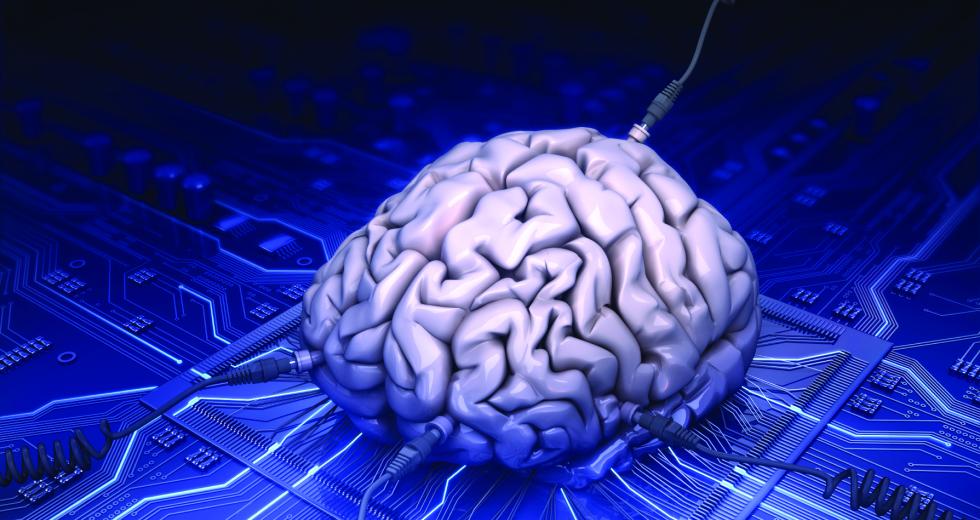Thought-controlled spaceships, clones or avatars? Computer chips in your brain? A cure — or even reversal — of Alzheimer’s disease? Local author Judith Horstman explores current and future brain research alongside its wondrous possibilities for human potential and business in her new book, “The Scientific American Brave New Brain.” The following is an adapted excerpt from her book, due in bookstores next month.
Yesterday’s science fiction is quickly becoming today’s science. In fact, many of today’s discoveries in neuroscience and the accompanying technology have surpassed science fiction. There have been massive changes in our basic understanding of neuroscience and our tools, and yet we are just beginning to grasp the intricate workings of the human brain — your brain.
There is a tremendous surge of neurology research and tremendous pressure to learn more, and faster, from an aging generation with the will and the means to force these advances: baby boomers. The first of the baby boomers, the largest ever demographic group and (even with the recession) the best off financially, are hitting old age, and a group that never took no for an answer is not going gently into that good night. Instead, it is kicking, screaming and raging for a better aging brain.
Billions of dollars are spent on brain research, especially in areas of dementia, memory loss and other conditions of aging. The National Institutes of Health alone spent $5.2 billion, nearly 20 percent of its total budget, on brain-related projects in 2008. With this expanded funding, researchers are making sweeping inroads in understanding and manipulating the brain.
We’ve learned more about the brain in the past 50 years than the preceding 50,000, and the cooperation among the sciences in the next two decades may even surpass that record. Brain research has moved beyond psychology, psychiatry and neurology, and married the so-called wet and hard sciences. Biology, biochemistry and chemistry now cohabit with physics, engineering, electronics, computer science, material sciences, statistical analysis and even information technologies. All of this is coupled with the fact that advances in technology are contributing better, smaller, faster and smarter devices and techniques.
Scientists and futurists are predicting the following changes by
midcentury:
• Computer chips or mini-microprocessors in the brain will expand
memory, control symptoms of brain disease — from Parkinson’s
disease to depression and anxiety — and wirelessly receive and
transmit information, so you won’t need a cell phone or a
computer to stay in touch.
• Brain surgery will be a thing of the past except in the most severe cases. Advanced neuroimaging will identify mental illness and brain disease before symptoms show. Microscopic robots, or nano-bots, will enter your bloodstream to diagnose and repair brain damage. Protein molecules will travel your brain turning on or off brain cells or genes responsible for brain diseases.
• Neuroenhancers from drugs to digital devices will boost memory and mind function in healthy people — and equally powerful drugs will help block painful or traumatic memories. That could mean growing new brain cells to replace neurons damaged by disease or slipping your kids a memory pill while they cram for Advanced Placement calculus.
• Alzheimer’s disease, other dementias, and perhaps even mental retardation will be preventable, curable, and even reversible in many patients.
• Those who are paralyzed will regain limb and spinal cord function, and thought-driven spare parts will abound, from prosthetic limbs and vision with lifelike function to prosthetic brain chips to store data and perhaps even duplicate neural networks.
This brave new world of brain research is making strange new partners, among them specialized businesses and products.
In fact, it has spawned a whole industry. Three hot neurotech areas that promise major changes in brain research are neuroimaging, neuropharmacology and neurodevices, such as brain implants. And they are thriving. The Neurotechnology Industry Report for 2008 shows 2 billion people worldwide are suffering from a brain-related illness with an annual economic burden of more than $2 trillion.
Globally, in 2008, more than 550 public and private companies participated in a neurotech industry where revenues rose 9 percent to $144.5 billion overall, with neuropharmaceuticals reporting earnings of $121.6 billion, neurodevices revenues of $6.1 billion, and neurodiagnostics revenues of $16.8 billion.
An estimated 36 million people worldwide have dementia of some kind; of that number, 5.3 million in the United States have Alzheimer’s. Nearly half of people over age 85 develop dementia, which means an estimated 100 million people by 2050.
Neuroscientists (whose brains are also at risk) are on the job looking for ways to preserve what we have, prevent more decline and reverse damage from disease or trauma. They are seeking the mysteries of memory. Billions are being spent on this research: More than $148 billion a year is spent on people with Alzheimer’s disease, and an estimated $1 billion is spent on annual treatments that have limited effect, if any. Much of that is Medicare money.
The military has a hefty investment in this as well. Neurotechnology and research will help the thousands of soldiers returning from wars with severe brain injuries or missing limbs. Advances will also perfect the toolbox for warfare. Neuroenhancers will keep soldiers and fighter pilots awake and alert for days, and will fine-tune and juice up mental focus and reflexes. Brain-machine interfaces could create new weapons and allow exploration into deep space and other hostile territory. And neuroimaging could allow us to see into brains to predict and possibly control behavior and thoughts. The next wave of knowledge and technology is already forming somewhere out there, and it’s rushing toward us at ever increasing and inexorable speed.
Excerpted and adapted from “The Scientific American Brave New
Brain” by Judith Horstman. Copyright 2010 by John Wiley & Sons
Inc. and Scientific American. Reprinted with permission of the
publisher John Wiley & Sons Inc. For more information, including
upcoming appearances, visit judithhorstman.com
Recommended For You

Head-Turning Technology
Advanced treatment promises better outcomes for prostate cancer
Rollie Swingle didn’t have treatment options for his stage IV prostate cancer.

Trauma Solution
The med center prepares to open a state-of-the-art facility
Over the course of his lengthy career as an orthopedic surgeon, Dr. Michael Chapman transformed trauma care in the Sacramento area, saving countless lives along the way.



